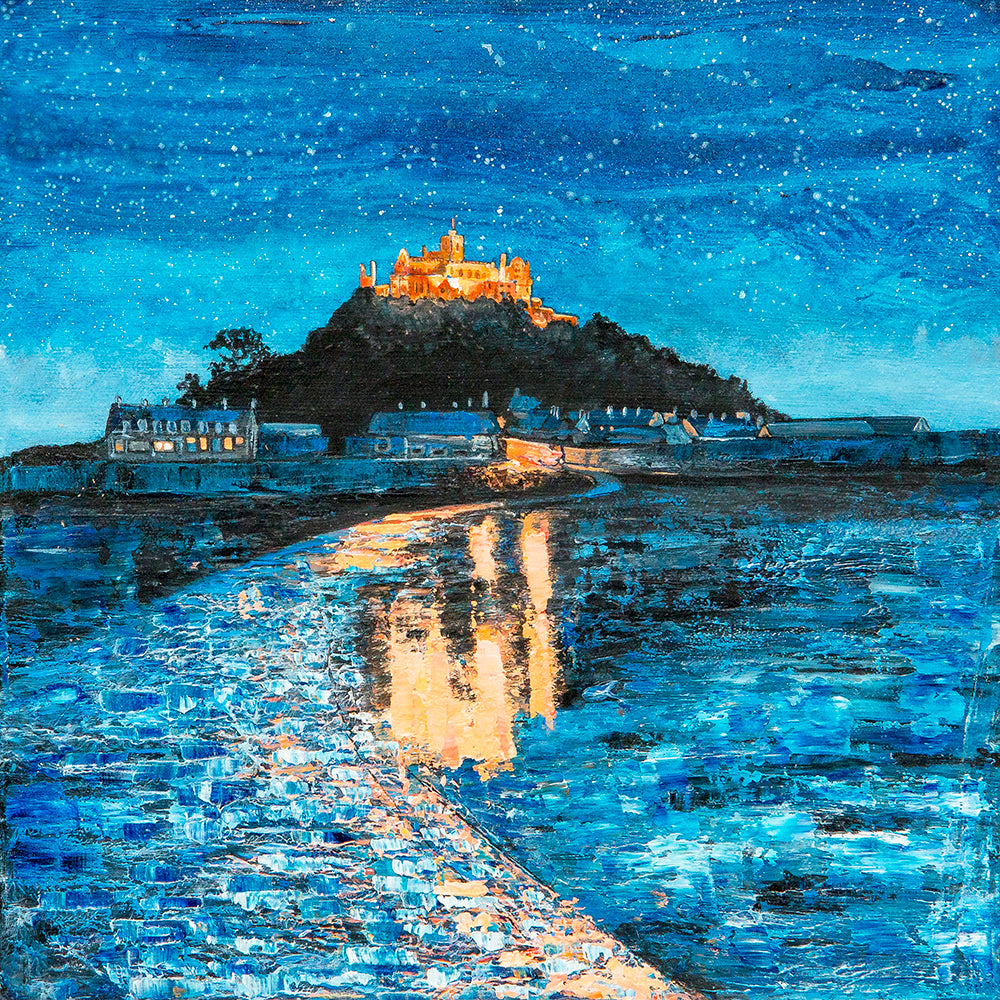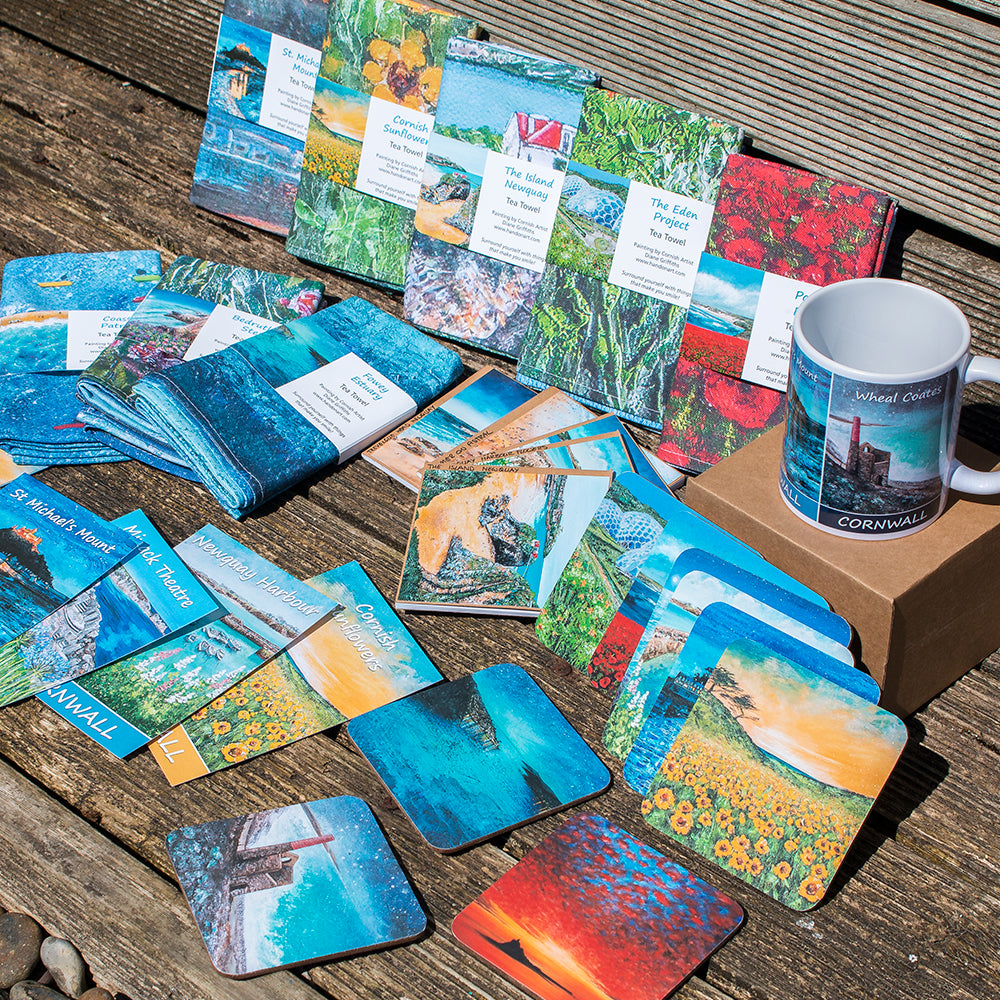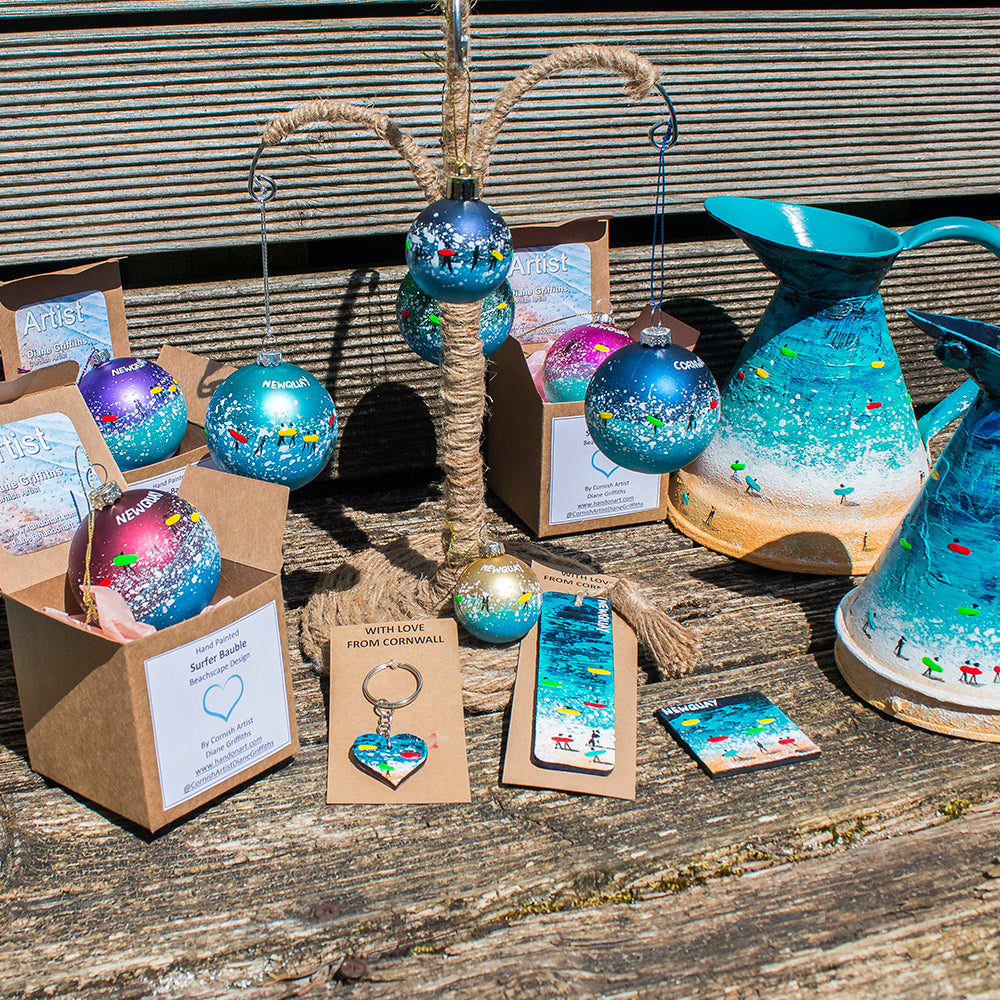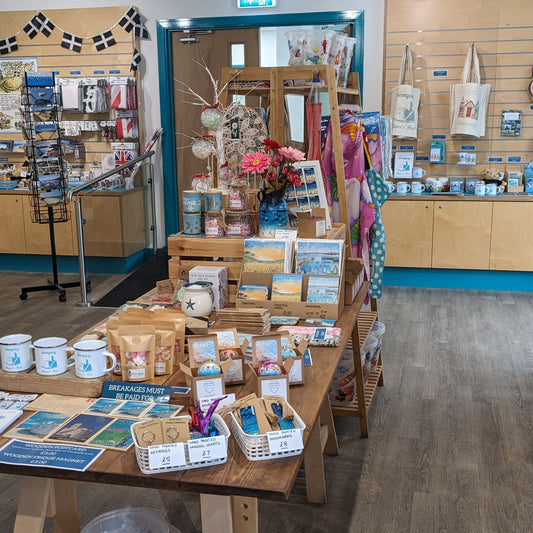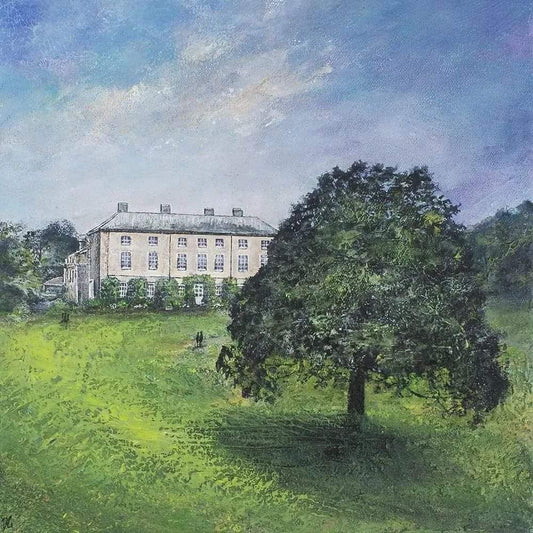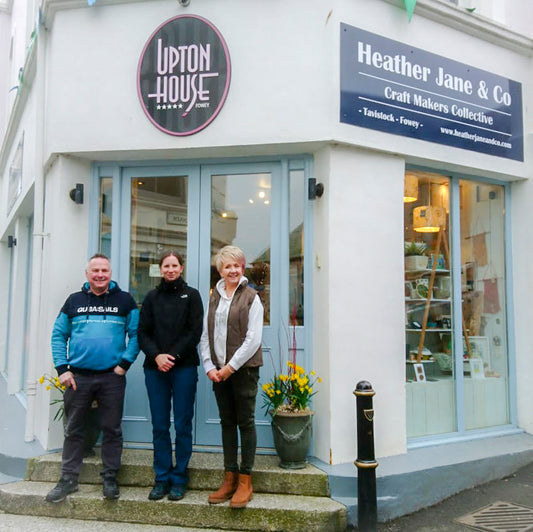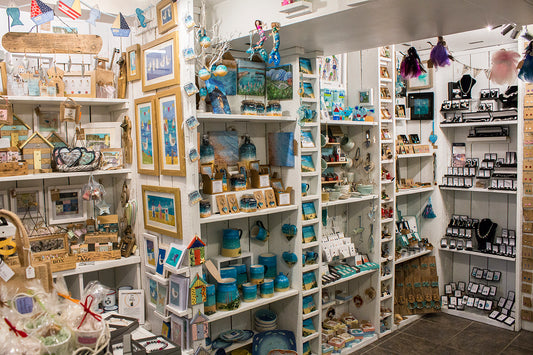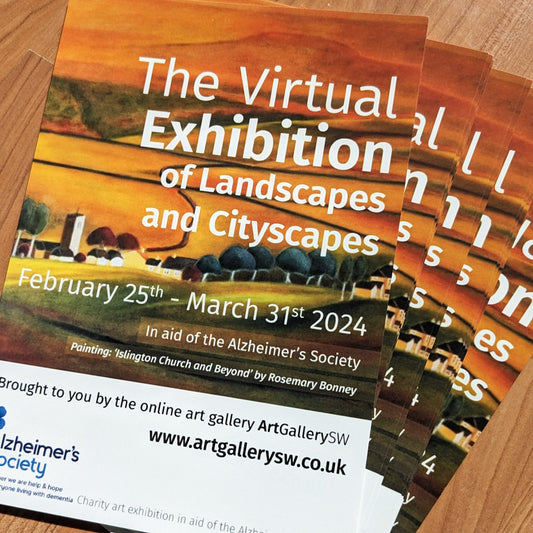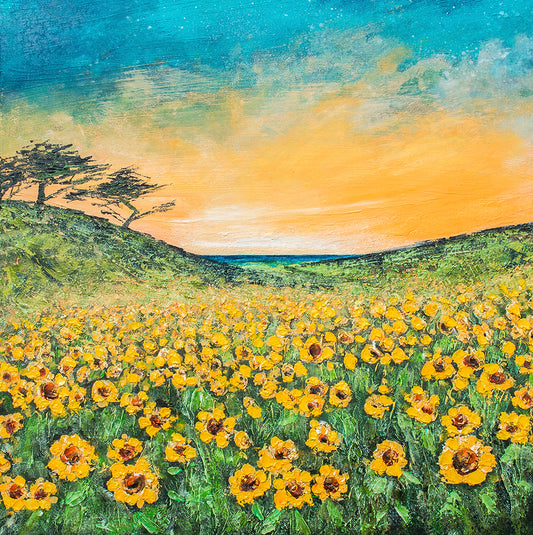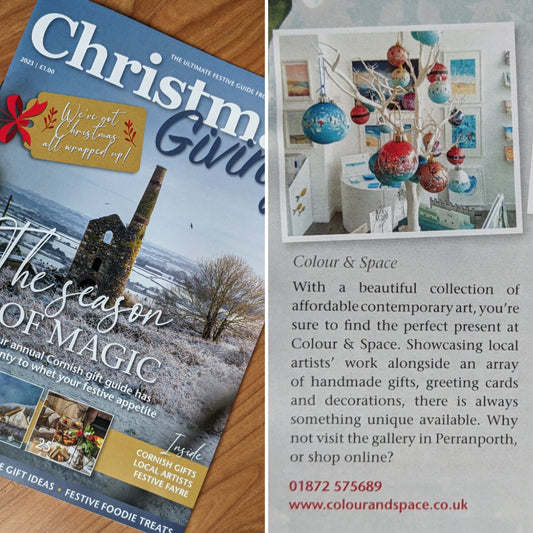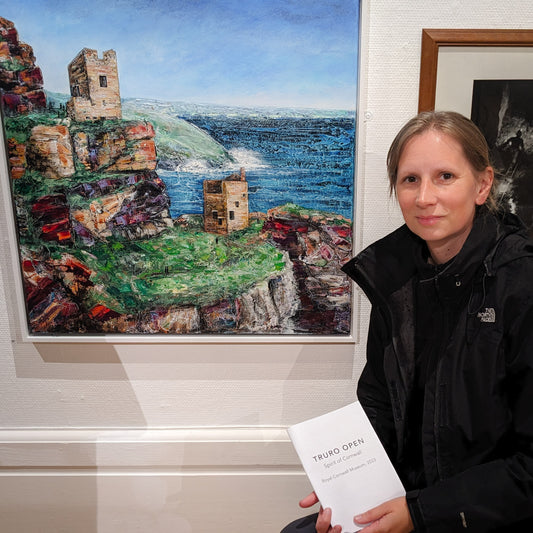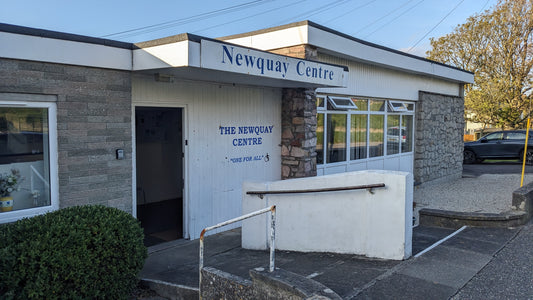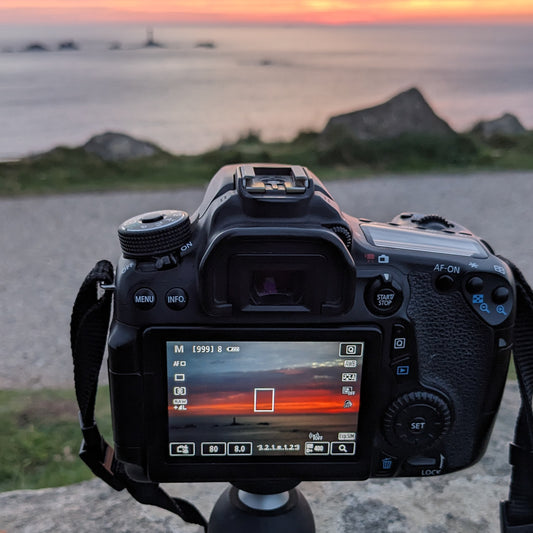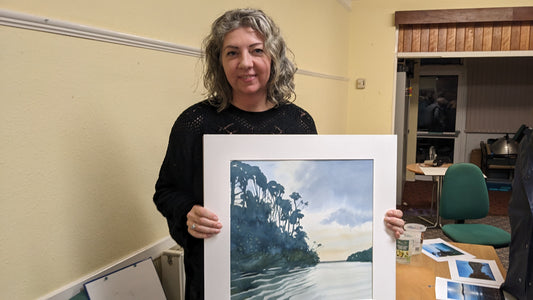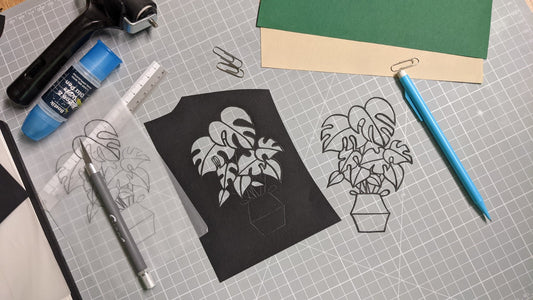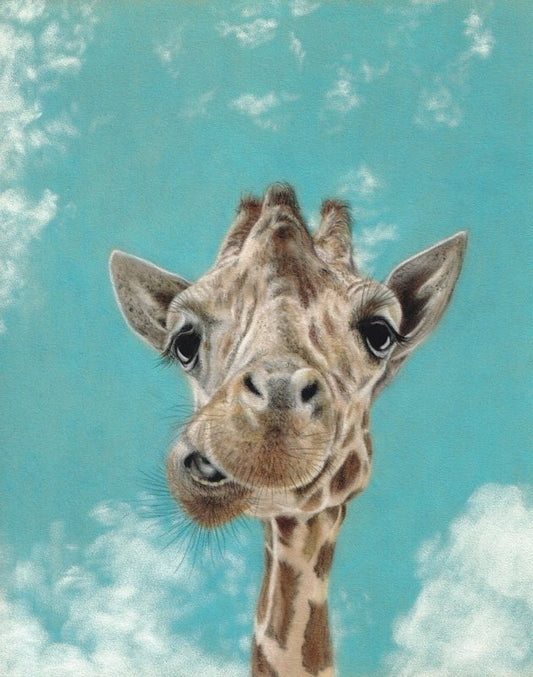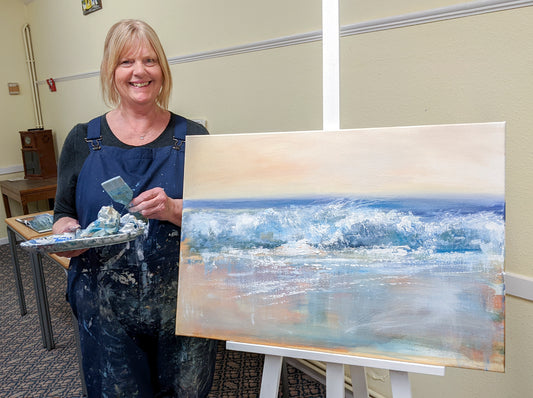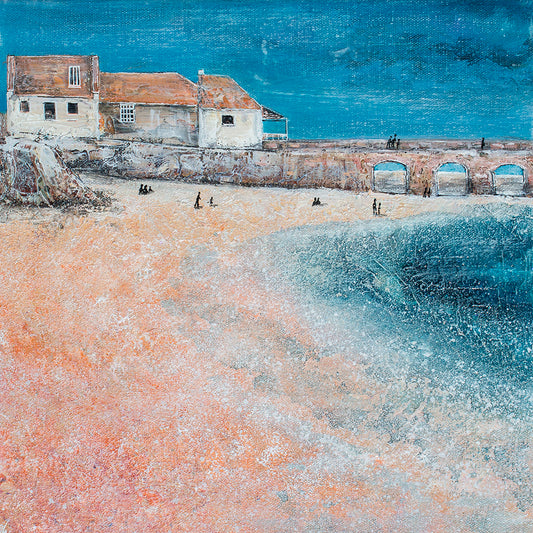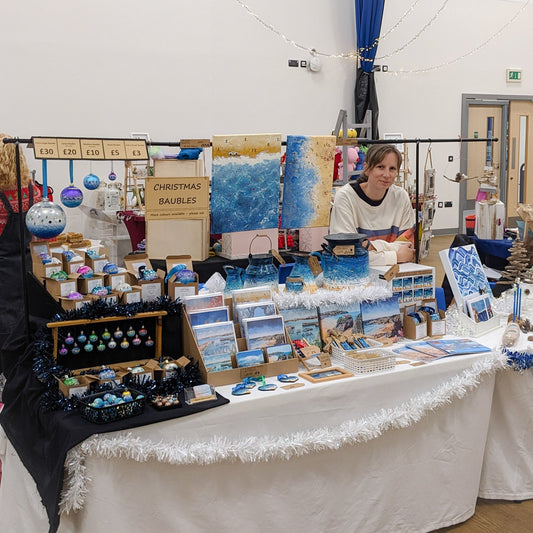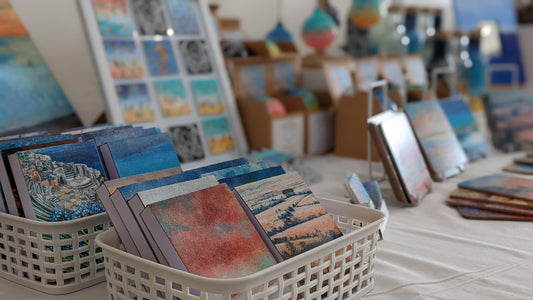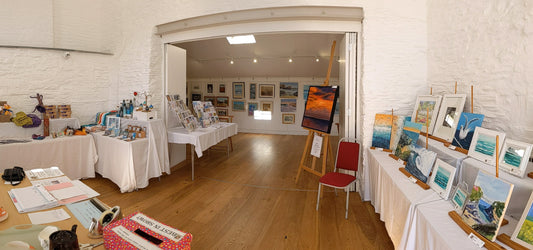After meeting Emma during the Newquay Society of Artists demonstration and seeing her amazing work in action, I wanted to find out a bit more.
Emma has a science background both research-based and teaching, but it wasn’t until she decided to create some home made Christmas presents did she discover the world of paper cutting.
There are many different paper cutting styles, Emma focuses on cutting out shapes on a black piece of paper in order to get a skeleton of an image with which to fill in colours. It reminds me of a paper version of a stained glass window.
She starts out by sketching the image, taking a photo and reducing it to colours and shapes. She will then trace out her image and reverse trace that onto a piece of black paper, this ensures the front stays pristine. Slowly she works through cutting just outside the lines in order to create the black outline.
At this point we all commented about how much patience must be required, but it was interesting to see Emma’s reaction to this. The cutting stage is her escapism; she can work in solitude and retreat into her own sanctuary. She describes it as disappearing into a world of cutting, excavating the image, digging out the pieces to reveal the image. In a similar way we do jigsaws in order to create the final picture, the enjoyment of the jigsaw is in the process to piece together the image, this is exactly how paper cutting is to her – it’s the process to reveal the image which is enjoyable and satisfying.
Then it’s time to add colour, using the black cut out image as a template, each piece is cut into the relevant colour and carefully added to the framework, using a roller to ensure pieces are glued evenly.
It was amazing to see the different stages and watch elements of the image appear. It’s hard to explain how amazing the artwork looks when you see it in the flesh, you can’t appreciate the precision included in each artwork, it’s truly outstanding and created to a very high quality.
Thanks to Emma for showing us her technique and being such a great presenter. Here's a short interview with her carried out after the demonstration.
1. Can you give me a bit of background about you and how you got into paper cutting?
I have a background in science, having done a zoology degree and working in scientific research before becoming a secondary school science teacher. I now work part time as a research technician at Exeter University which gives me time in the week for art. I first tried papercutting in 2013 when I had the idea to make mini paper pictures for my family for xmas. I can't tell you why I thought of it, the idea just popped into my head! I enjoyed the process so started looking at papercutting on pinterest etc and gradually became completely obsessed with it and have been ever since.
2. We're really grateful that you joined the Newquay Society of Artists for a lovely evening giving a demo of what you do. What do you enjoy about doing demos?
The demo was my first and only one to date! I'd love to do more though. I enjoyed sharing my technique with fellow art enthusiasts, and getting their feedback and making them smile.
3. Is there an artwork you are most proud of and why?
I have a few: My dragonfly art which is above my desk at home. This was a huge challenge for me at the time, and the first time I tried a new technique of creating a black outline and filling with colour. The whole thing took 3 months to complete!
A recent pet portrait I did of 6 bassett hounds which took around 40 hours to complete and was my biggest commission (in money terms) to date.
And my new range of papercut greetings cards which are a long time in the making as I couldn't decide the best way to make greetings cards. I wanted to stay true to papercutting and not do printed designs, and I think I found an effective way to do them and still earn a fair price for my work.
4. If someone was starting new – what tips would you give them to help them be a successful paper cutting artist?
Practise every day and expect to make mistakes. Don't copy anyone's style, just do what feels natural and gradually your own style will present itself to you.
5. This is a tough question, but what are your long term goals as an artist?
I would like to be able to do art as a full time job, and leave my part-time job.
6. What's the best way for people to contact you and see your art?
My Instagram and Facebook pages, or just drop me a DM and we'll get chatting :) I'm very friendly and love talking about papercutting.
I have an Etsy shop and a landing page where you can sign up for my newsletter which will have discounts and lots of fun stuff.
Conclusion
A big thanks to Emma for taking the time to answer my questions and give us a little insight into her world. The photos below don't quite do justice to show the huge amount of detail and precision required for this type of art. Although I have to say the work in progress photo of the dragonfly gives you a fair starting point when you see all the tiny cutouts involved, that's the sort of detail you can only fully appreciate when you see the artwork in person.
Her tools are a scalpel and a steady hand, which sounds more like surgery than art, but with outstanding results which are definitely a delicate and surprising mix of technical and creative. Take a look at her Esty shop - she has a lovely selection of work and greeting cards for sale.


